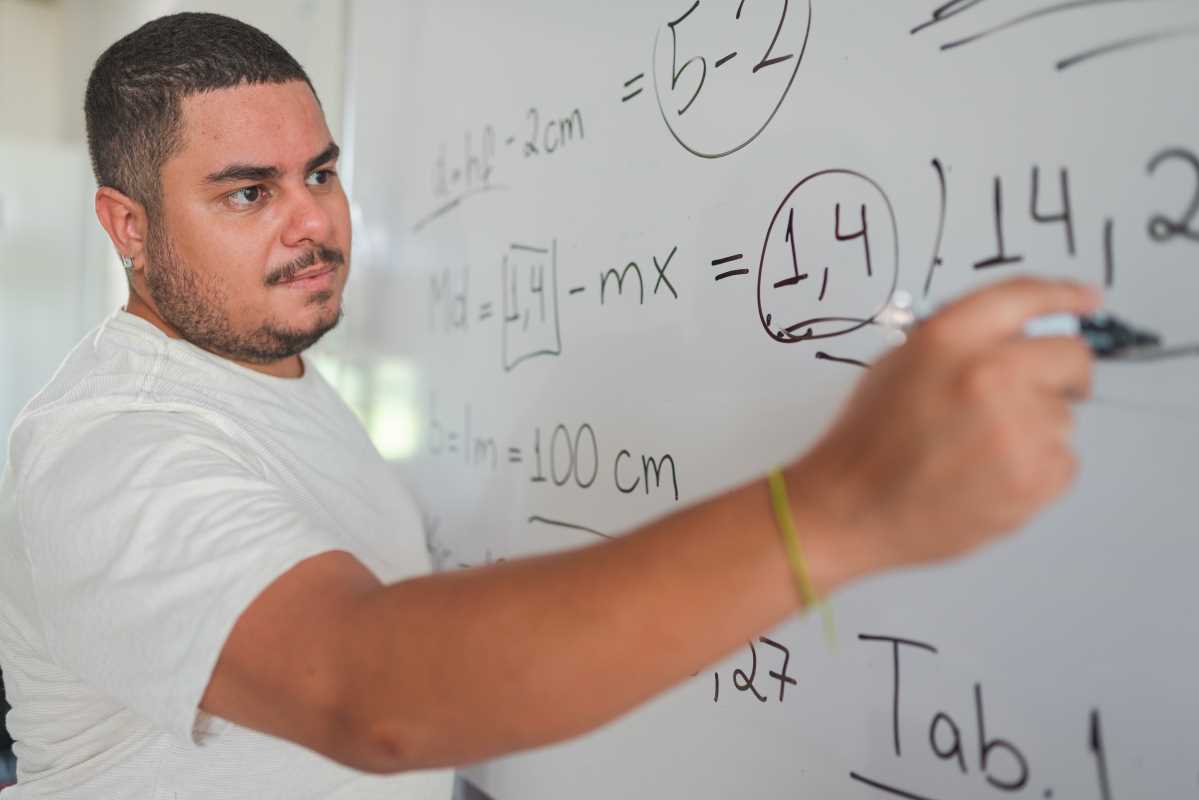Ever been curious about why certain individuals master math concepts with ease while others struggle? The secret may be hidden in the way our brains handle information. By exploring the link between the right hemisphere of the brain and math learning, we can gain insight into various learning styles. This understanding not only illuminates how people learn differently but also offers valuable techniques for enhancing mathematical abilities. Discovering these connections can make a significant difference in how we approach math education, helping to tailor teaching methods that cater to diverse cognitive processes, ultimately enriching the learning experience for everyone involved.
The Role of the Right Brain in Learning Math
The human brain divides into two hemispheres, each responsible for different types of cognitive processes. While the left brain often associates with logical reasoning and analytical tasks, the right brain plays a crucial role in spatial awareness, creativity, and holistic thinking. When it comes to learning math, the right brain contributes in several key ways:
- Visualizing Concepts: The right brain helps create mental images of mathematical problems, making abstract concepts more tangible.
- Pattern Recognition: It excels at identifying patterns and relationships within numbers and equations, which is essential for problem-solving.
- Spatial Reasoning: This ability allows individuals to navigate complex geometrical shapes and understand spatial relationships in math.
- Creative Thinking: The right brain encourages innovative approaches to tackling mathematical challenges, promoting out-of-the-box solutions.
By using these functions, learners can enhance their mathematical understanding and performance.
Understanding Neuroscience and math learning
Neuroscience delves into how the brain processes and retains information. In the context of math learning, it examines how different brain regions activate and interact during mathematical tasks. Research has shown that engaging the right hemisphere can lead to a more integrated and comprehensive understanding of mathematical concepts.
For example, when solving a geometry problem, the right brain's spatial reasoning capabilities work alongside the left brain's analytical skills to provide a complete solution. This interplay enhances cognitive flexibility, allowing learners to switch between different modes of thinking as needed.
Benefits of Right-Brain Dominance in Math
Individuals with a more dominant right brain often exhibit several advantages in mathematics:
Firstly, their ability to visualize complex problems makes it easier to comprehend and solve them. This skill proves particularly useful in subjects like geometry and algebra, where spatial relationships are key. Secondly, their strong pattern recognition aids in identifying underlying structures in mathematical equations, facilitating quicker problem-solving. Creative thinking enables them to approach problems from multiple angles, resulting in innovative solutions that might not be immediately apparent.
Right-brain dominance can lead to a more enjoyable and less stressful math learning experience. By engaging with math in a more intuitive and less rigid manner, learners develop a positive attitude towards the subject, which can translate into better academic performance.
Challenges Faced in Traditional Math Education
Despite the benefits of right-brain dominance, traditional math education systems often emphasize left-brain skills, such as rote memorization and repetitive problem-solving. This approach poses significant challenges:
- Lack of Emotional Connection: Traditional methods may not address the emotional aspects of learning, potentially hindering the development of emotional intelligence in students.
- Limited Creativity: By focusing primarily on analytical skills, these systems may stifle creative thinking and discourage innovative problem-solving.
- One-Size-Fits-All Approach: Not all students learn in the same way. Traditional methods may fail to accommodate different learning styles, particularly those who rely on right-brain strengths.
- Increased Anxiety: High-pressure environments and an overemphasis on correctness can lead to math anxiety, making students less likely to engage deeply with the material.
Addressing these challenges requires a more balanced educational approach that values both hemispheres of the brain.
Practical Tips to Enhance Right-Brain Math Skills
- Incorporate Visual Aids: Use diagrams, graphs, and color-coded materials to help visualize mathematical concepts and relationships.
- Encourage Creative Problem-Solving: Provide open-ended problems that allow for multiple solutions, promoting creative thinking and flexibility.
- Use Real-World Applications: Relate math problems to real-life scenarios to make learning more relevant and engaging.
- Integrate Music and Rhythm: Incorporate songs or rhythmic patterns to help memorize formulas and sequences, tapping into the brain's natural rhythms.
- Promote Collaborative Learning: Encourage group work and discussions to share different perspectives and approaches to problem-solving.
- Engage in Mindfulness Practices: Practices like meditation can enhance focus and reduce anxiety, creating a better learning environment.
- Utilize Technology: Incorporate educational software and apps that offer interactive and visually stimulating math exercises.
- Foster a Growth Mindset: Encourage the belief that mathematical abilities can develop through effort and learning, rather than being innate.
- Provide Hands-On Learning Opportunities: Use physical manipulatives and interactive activities to explore mathematical concepts tangibly.
- Celebrate Achievements: Recognize and reward progress and effort in math learning to build confidence and motivation.
Implementing these methods can create a more balanced and effective math learning experience that uses the strengths of the right brain.
Understanding the role of the right brain in math learning opens up new avenues for enhancing mathematical skills. By integrating creative and visual approaches with traditional methods, educators and students can create a more comprehensive and enjoyable math education experience.







